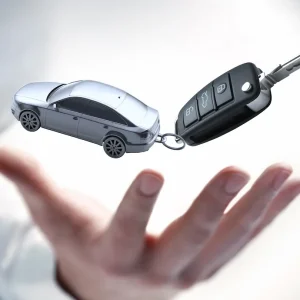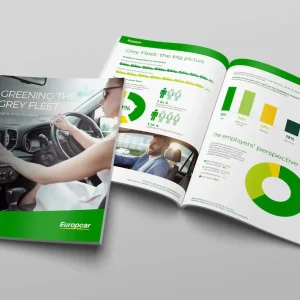As Clean Air Zones continue to rollout across the UK, it is evident the transport industry is taking positive steps forward to tackle climate change and progress sustainable solutions. With electric vehicles (EVs) forming the central component of many sustainability strategies, is the rate of adoption reflective of this shift?
It is crucial that focus on EVs is also prioritised by those outside of the automotive industry to ensure progress can continue at pace. Earlier this year the aptly named #SeeTheBenefit campaign from the British Vehicle Rental and Leasing Association (BVRLA) targeted MPs from across the political spectrum to highlight how environmentally conscious fleet managers and businesses should turn their attention to EVs in their pursuit of more sustainable initiatives.
While initial support outlined by the government, such as low benefit-in-kind (BIK) tax rates, has helped support the cost of transitioning to EVs, it is key that ongoing certainty is provided for businesses so a catalyst for adoption remains across the UK. The industry itself has been making positive progress towards electrification, as acceptance and demand continues to grow, with the UK’s millionth plug-in electric car taking to the roads last month.
You only need to look at the sales figures from the last few years to see the rapid rate of growth the electrified vehicle market has been experiencing. At Alphabet GB alone, new car orders for plug-in hybrid electric vehicles have been almost neck and neck with petrol cars this year; at 31% and 33% respectively. Pure electric vehicles are also catching up, at 27% of new car orders, an increase of 19% from 2021, showing a growing confidence in pure electric technology.
It’s an exciting time to be part of the movement towards a more sustainable future and the pace at which the transition is happening is encouraging to see, especially at a time of ongoing supply chain challenges for the industry. But there’s still more work to be done. Maintaining forward momentum is key if the UK is to continue to defy expectations around electric vehicle uptake. The many ways in which the industry is already improving access to EV adoption, along with necessary support from the UK Government around tax benefits and infrastructure, will be integral to meeting the 2030 deadline.
Cutting costs
Cost is often a top consideration for drivers when switching to an electric vehicle, and promisingly, energy efficient vehicles are already becoming cheaper to access as more variety enters the market. And the overall savings that can be made when drivers and businesses account for the Whole Life Cost of an electric vehicle, compared to petrol or diesel, are compelling.
Demand for EVs has been significantly boosted by the favourable benefit-in-kind (BIK) tax rates to this point, creating a real incentive for drivers choosing an electric vehicle as their next company car. Following the Chancellor’s Autumn Budget announcement in November, EVs will no longer be exempt from vehicle excise duty (VED) from 2025, and BIK tax rates will remain low until 2025 then increase by one percentage point each year. Alphabet has advocated for more clarity on tax rates for company cars, and while this announcement provides this and ensures businesses have the certainty they need to plan for future fleet strategies, the VED tax increases for EVs are a less favourable outcome. Campaigners and organisations are similarly stressing the importance of tax benefits to encourage EV adoption, which in turn plays a fundamental role in the UK’s plan to reach its Net Zero targets by 2050. According to the BVRLA’s Net Zero Report Card 2022, thanks to BIK tax rates, we saw a remarkable jump in business car leasing with zero emission vehicles (ZEVs) rising from 8% of the fleet in 2021 to 17% in 2022.
Tax benefits like these have helped schemes such as salary sacrifice grow in popularity. Salary sacrifice supports further electric adoption by allowing drivers to enjoy the benefits of EVs without the worry of high purchase costs. In effect, thanks to the tax reductions the flexible funding scheme offers, both employees and employers can save money. The recent BVRLA report indicates that the number of salary sacrifice ZEVs grew from 22% to 55% in 2022.
EV drivers can also still benefit from the government’s Energy Price Guarantee which caps the amount energy firms can charge. With the UK’s electricity costs capped at 34p/kWh from 1 October, drivers are paying one third less than what was initially expected under the cap that Ofgem announced in late August.
Infrastructure improvements
Charging infrastructure, in the UK in particular, has been a topic that has received much attention in recent years, especially since companies now still benefit from 100% first-year allowance measures to install electric charge points. At a broader level, the UK Government has committed to investing £1.6 billion to set up 300,000 public chargers by 2030, as well as unveiling a new plan in August to build 1,000 new electric vehicle charge points across England as part of a pilot project with local authorities, powered by government and industry funding of £20 million. The BVRLA’s Net Zero Report Card estimates that more than 600 new charging points are installed monthly across UK roads and 100 of these are classified as rapid.
Alongside this, according to the Department for Transport (DfT), by July 2022 the number of public EV chargers in the UK reached slightly over 32,000 – a rise of 6% or 1,721 devices compared to figures in April. Of these devices, 5,974 have been rapid chargers, an increase of 9% since April, and importantly nearly all regions, bar Northern Ireland, also saw increases in charging infrastructure in the same period. These factors all help to provide more options and flexibility for charging, although there is still some distance to travel to provide full peace of mind for drivers across the UK.
Driving forwards
Backed up by industry and government initiatives over the last few years, the progress towards full vehicle electrification in the UK is undeniable. However, it will only be amplified with further initiatives both from inside and outside the automotive industry. With the existing grants and infrastructure focuses, it’s vital these positive steps towards electrification, balanced with key incentives, continue to be supported at a government level so that the fleet industry is empowered to help fleet decision makers put electrification into motion.
Caroline Sandall-Mansergh is consultancy and channels development manager for Alphabet GB.





